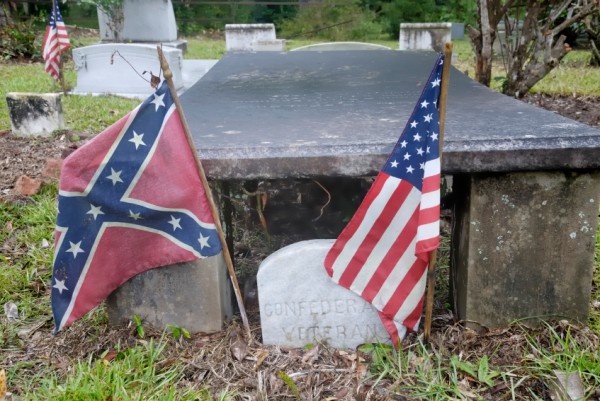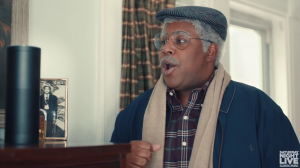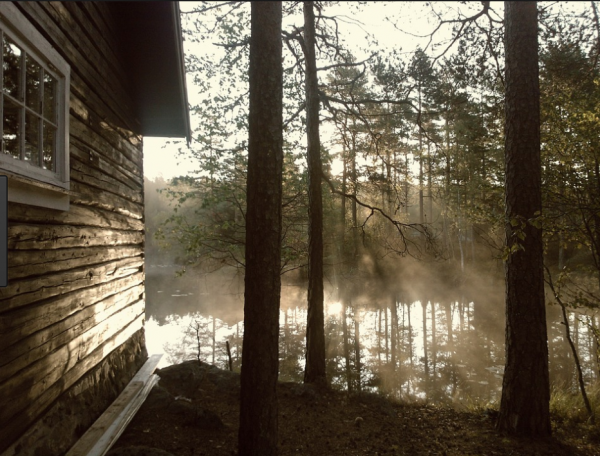
Like many Southern boys, I grew up with two flags hanging in my room — an American flag and a Confederate battle flag. The American flag was enormous, taking up much of one wall. It was the “1776” flag, with 13 stars in a circle in the field of blue. My grandmother bought it for me on the bicentennial, and for years it was a treasured possession. The flag took on a special meaning later in life, when I learned more of a family history that included service with General Washington, suffering at Valley Forge.
The Confederate battle flag was much smaller, and it hung over my bookshelf. We bought it at the Shiloh battlefield in Tennessee, where one of my Confederate ancestors fought and where Albert Sidney Johnston died — the general that many considered the great hope of the Confederate Army in the West. My Confederate forefathers went on to fight at Vicksburg, at the battles of Franklin and Nashville, and in countless skirmishes across Tennessee and Mississippi. I grew up looking at old family pictures, including men who still wore their Confederate uniform for formal portraits — long after the war had ended.
Like many Southern families’, my family’s military story didn’t end with the Civil War — it continued on to World War I, the European theater in World War II, the Cuban Missile Crisis, and then to my own recent deployment during the Surge in Iraq. The martial history of our family is inseparable from the family story, and it includes men in gray.
So I’ve followed this most recent round of debate over the Confederate battle flag with perhaps greater than normal interest. In the immediate aftermath of mass shootings, there is always a demand to “do something.” Always, that demand involves gun control — typically, gun-control measures that wouldn’t have actually stopped the shooting in question. But often there’s something more. In the aftermath of the Gabby Giffords shooting, the Left demanded “civility” — despite zero evidence that the barking-mad perpetrator was motivated by any form of political discourse. Now the demand is to remove the Confederate battle flag from a Confederate memorial in South Carolina (and presumably elsewhere). The Atlantic’s Ta-Nehisi Coates, with characteristic vehemence, says, “Take down the flag. Take it down now.” His call — and others — have resonated around the web.
If the goal of our shared civic experience was the avoidance of pain, then we’d take down that flag. But that’s of course not the goal.
There’s a disturbing habit on the Left of trying to find the position that renders one especially virtuous in their identity politics culture — regardless of its real-world impact — and then sneering from that high ground at all who dissent. But that’s certainly not everyone’s motive, and it’s certainly not the motive of those calling for the flag’s removal at National Review. It’s simply undeniable that the Confederate battle flag is a painful symbol to our African-American fellow citizens, especially given its recent history as a chosen totem of segregationists. So it’s critical to respond to the argument in good faith. And just as the history of the Civil War is personal to me, so is America’s present racial reality. As I’ve mentioned before, my youngest daughter is quite literally African-American (born in Ethiopia and now as American as apple pie), and when she’s a little bit older, we’ll no doubt have many tough conversations about history and race.
If the goal of our shared civic experience was the avoidance of pain, then we’d take down that flag. But that’s of course not the goal. Rather, we use history to understand our nation in all its complexity — acknowledging uncomfortable realities and learning difficult truths. For white southerners — especially those with deep roots in the South — those difficult truths are presented front and center throughout our lives. Yes, the South seceded in large part to preserve slavery. Yes, had the South prevailed, slavery not only would have been preserved for the indefinite future, it may have even spread to new nations and territories. And no, while some southerners were kinder than others, there was nothing “humane” about the fundamental institution of slavery itself. As Coates and others have often and eloquently explained, it was a system built on plunder and pain.
But there are other difficult truths.
Read more of David’s article here on National Review.









